Top Rankings
Cranberry Area School District ranks among the top 20% of public school district in Pennsylvania for:
Category
Attribute
Graduation Rate
Highest graduation rate (Top 10%)
For the 2025 school year, there is 1 public elementary school serving 584 students in Cranberry Area School District. This district's average elementary testing ranking is 5/10, which is in the bottom 50% of public elementary schools in Pennsylvania.
Public Elementary School in Cranberry Area School District have an average math proficiency score of 37% (versus the Pennsylvania public elementary school average of 35%), and reading proficiency score of 52% (versus the 54% statewide average).
Minority enrollment is 4% of the student body (majority Black and Hispanic), which is less than the Pennsylvania public elementary school average of 42% (majority Hispanic and Black).
Overview
This School District
This State (PA)
# Schools
2 Schools
2,145 Schools
# Students
1,143 Students
1,108,977 Students
# Teachers
91 Teachers
82,943 Teachers
Student : Teacher Ratio
13:1
13:1
District Rank
Cranberry Area School District, which is ranked within the bottom 50% of all 675 school districts in Pennsylvania (based off of combined math and reading proficiency testing data) for the 2021-2022 school year.
The school district's graduation rate of 95% has stayed relatively flat over five school years.
Overall District Rank
#370 out of 684 school districts
(Bottom 50%)
(Bottom 50%)
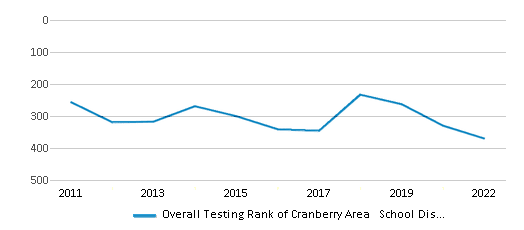
Math Test Scores (% Proficient)
32%
36%
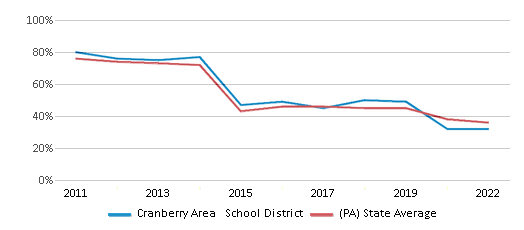
Reading/Language Arts Test Scores (% Proficient)
54%
55%

Science Test Scores (% Proficient)
60-64%
57%

Graduation Rate
≥95%
87%
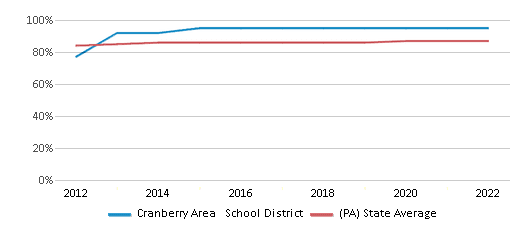
Students by Ethnicity:
Diversity Score
0.09
0.61
# American Indian Students
2 Students
2,278 Students
% American Indian Students
n/a
n/a
# Asian Students
4 Students
51,838 Students
% Asian Students
n/a
5%
# Hispanic Students
10 Students
173,776 Students
% Hispanic Students
1%
16%
# Black Students
6 Students
169,696 Students
% Black Students
1%
15%
# White Students
1,093 Students
645,871 Students
% White Students
96%
58%
# Hawaiian Students
2 Students
965 Students
% Hawaiian Students
n/a
n/a
# Two or more races Students
26 Students
63,991 Students
% of Two or more races Students
2%
6%
Students by Grade:
# Students in PK Grade:
-
7,744
# Students in K Grade:
72
110,287
# Students in 1st Grade:
78
120,767
# Students in 2nd Grade:
92
126,133
# Students in 3rd Grade:
78
120,907
# Students in 4th Grade:
75
125,574
# Students in 5th Grade:
100
126,000
# Students in 6th Grade:
89
126,698
# Students in 7th Grade:
102
94,854
# Students in 8th Grade:
99
93,972
# Students in 9th Grade:
107
16,255
# Students in 10th Grade:
98
14,467
# Students in 11th Grade:
69
12,872
# Students in 12th Grade:
84
12,447
# Ungraded Students:
-
-
District Revenue and Spending
The revenue/student of $19,024 in this school district is less than the state median of $23,696. The school district revenue/student has stayed relatively flat over four school years.
The school district's spending/student of $16,999 is less than the state median of $23,119. The school district spending/student has stayed relatively flat over four school years.
Total Revenue
$22 MM
$39,541 MM
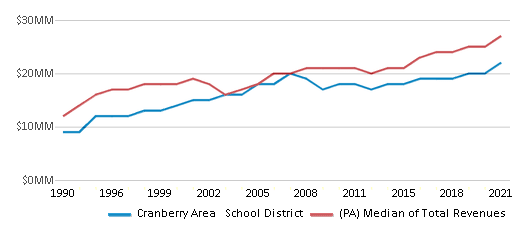
Spending
$19 MM
$38,578 MM
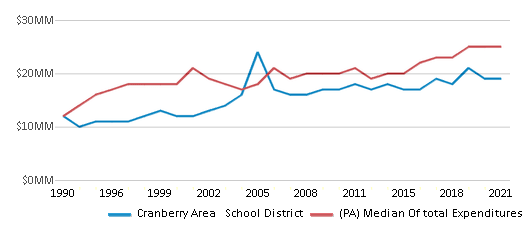
Revenue / Student
$19,024
$23,696
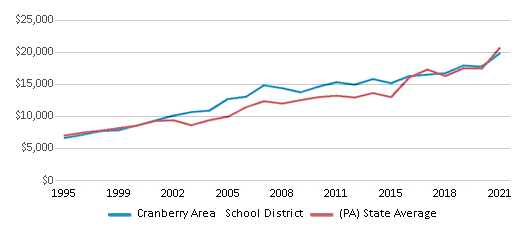
Spending / Student
$16,999
$23,119
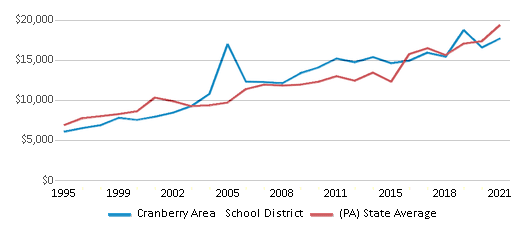
Best Cranberry Area School District Public Elementary Schools (2025)
School
(Math and Reading Proficiency)
(Math and Reading Proficiency)
Location
Grades
Students
Rank: #11.
Cranberry Elementary School
(Math: 37% | Reading: 52%)
Rank:
Rank:
5/
Bottom 50%10
3 Education Dr
Seneca, PA 16346
(814) 676-1871
Seneca, PA 16346
(814) 676-1871
Grades: K-6
| 584 students
Recent Articles

Year-Round Or Traditional Schedule?
Which is more appropriate for your child? A year-round attendance schedule or traditional schedule? We look at the pros and cons.

Why You Should Encourage Your Child to Join a Sports Team
Participating in team sports has a great many benefits for children, there is no doubt. In this article you will learn what those benefits are.

White Students are Now the Minority in U.S. Public Schools
Increasing birth rates among immigrant families from Asia and Central and South America, combined with lower birth rates among white families, means that for the first time in history, public school students in the United States are majority-minority. This shift in demographics poses difficulties for schools as they work to accommodate children of varying language abilities and socio-economic backgrounds.





